
Issue 075
May 2011
In MMA the bottom man has to concern himself with his opponent's ground ‘n’ pound and submission attempts. Keeping your head and body safe from strikes can trigger mistakes that open up locks, and vice versa. Often submission attempts originate when the bottom man is attempting his escape. When trying to get out from the bottom, it’s imperative to not offer any opportunity for the finish.
EXPLODE OUT TO STANDING WITH WRIST CONTROL
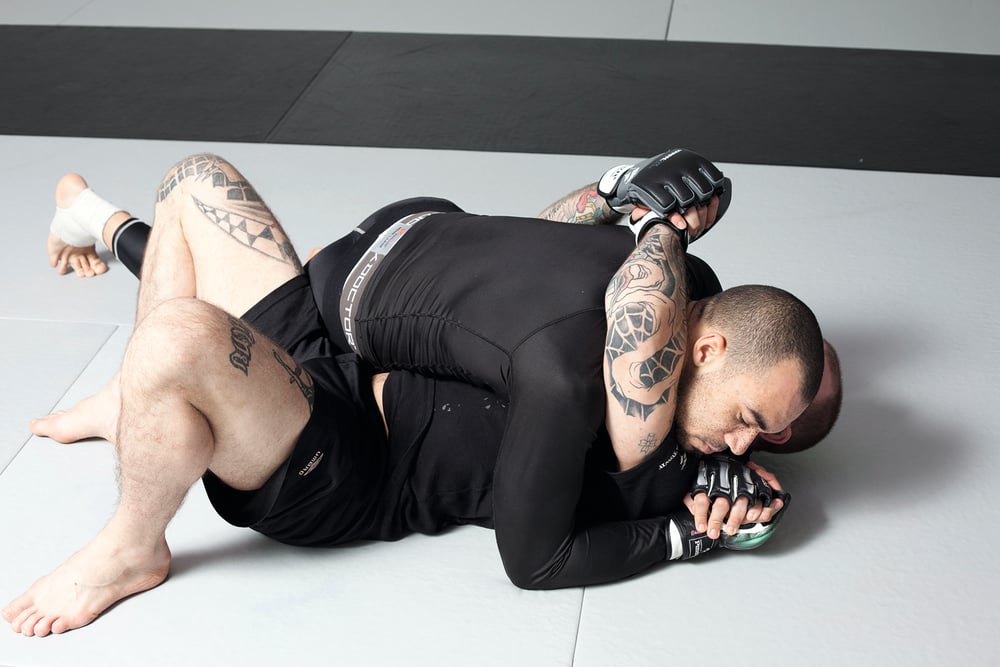
1 Pete is stuck under Obi’s side control. Obi is using a traditional grip: pressuring with his shoulder and holding around Pete’s neck, under-hooking on his far side. Obi’s hands are locked in a gable grip. Pete copies Obi’s grip, keeping him too close to effectively strike with punches and elbows. With his hands locked together it is hard for Obi to isolate an arm to attack for the submission. Only Pete’s ribs are vulnerable to a knee attack from Obi because he is flat on his shoulders.

2 Pete hips out, pushing his bum away from Obi and lifting his far shoulder off the mat. Having created some space, Pete places in a hook using his top leg inside Obi’s hip, preventing Obi from closing the gap he’s just made.

3 Pete’s now able to bring his arms back inside to the proper defensive position. With Obi’s body tight against him Pete’s arm would’ve been in danger had he tried to re-pummel. But, with Obi’s hips pressed away, Pete can safely return to inside control and achieve his own under-hook.
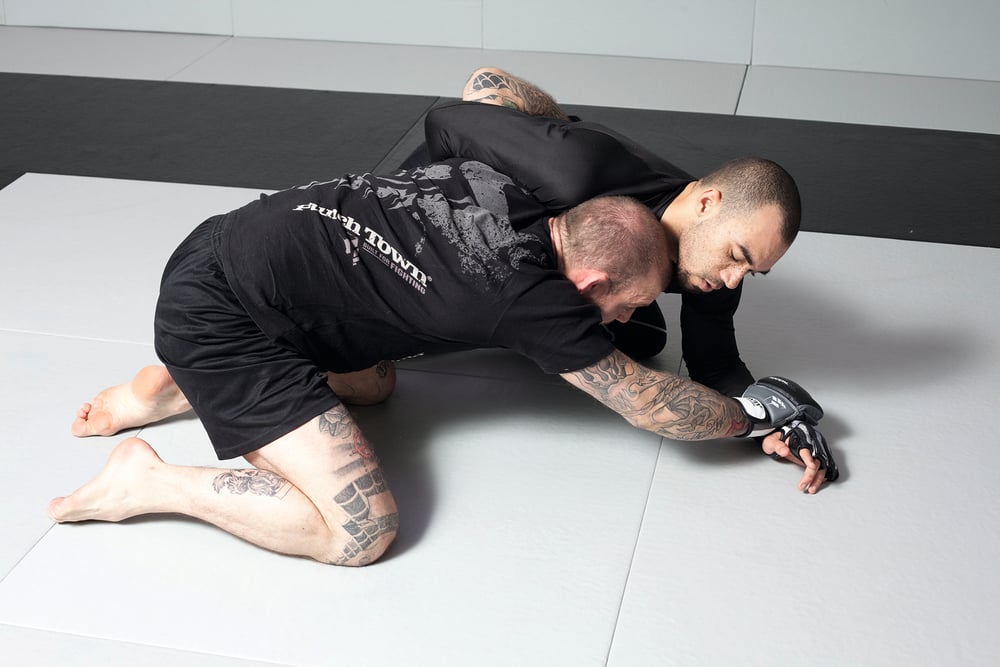
4 Pete could put Obi into his guard from here. But instead he elects to turn all the way to his knees. He then under hooks Obi, going for a seatbelt (arm around the waist) as opposed to a high under-hook on Obi’s shoulder. Pete controls Obi’s far wrist and puts his forehead in Obi’s neck.

5 As Pete stands up he’s already prepared an advantageous clinch position by correctly placing his head and under-hook before coming to his feet.
ARM-UNDER BRIDGE OUT
This is tricky: if you mistime the initial movement of placing your arm under, you may well find yourself trapped with no cover for your head. This technique must be perfected with much drilling before attempting it in a live sparring context. The bridge out is a very fast, explosive movement which will fail if performed at a low pace.
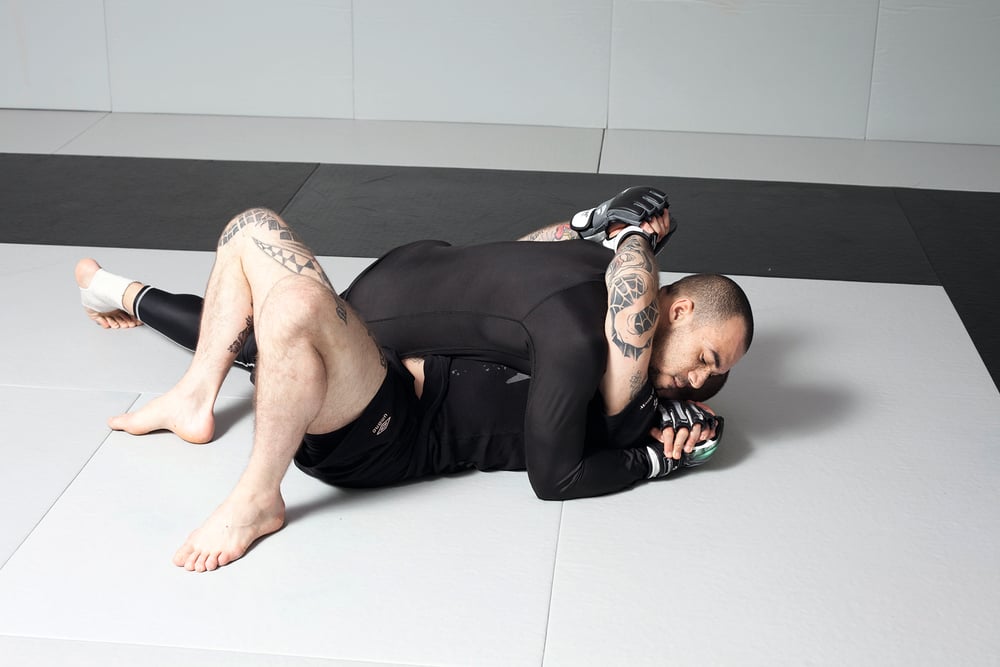
1 Pete is trapped under Obi’s traditional-style side control.

2 Pete pushes his far arm under Obi’s body, reaching through deeply. Pete has rotated his body as he begins the escape, taking Obi’s center of gravity off his own.

3 With his heels close to his bum, Pete bridges, raising his hips and propelling Obi even further off his center.
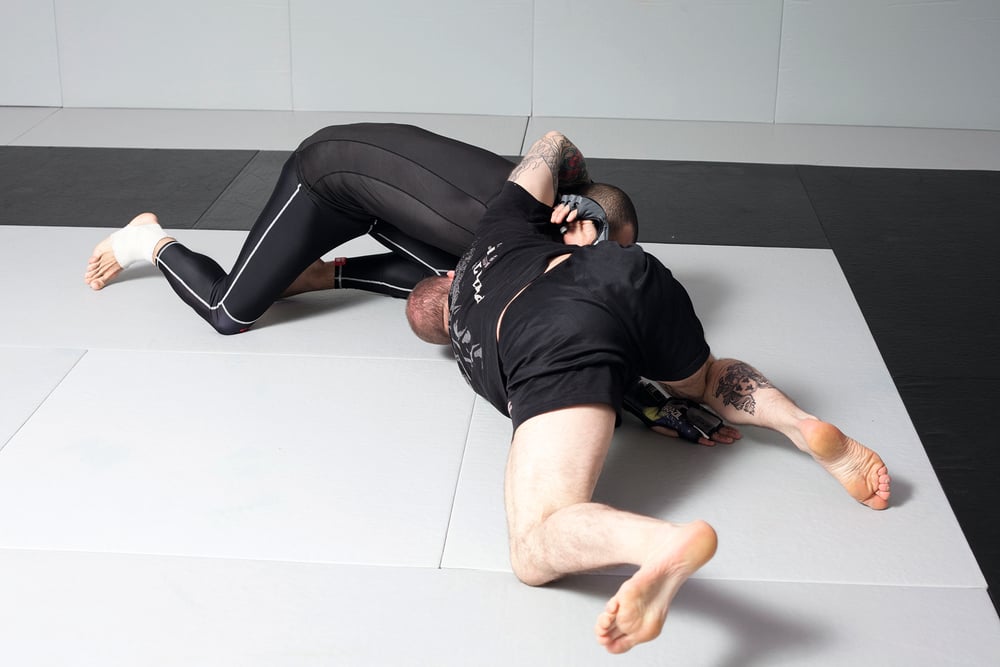
4 Pete rotates his shoulder through and turns towards Obi’s head.
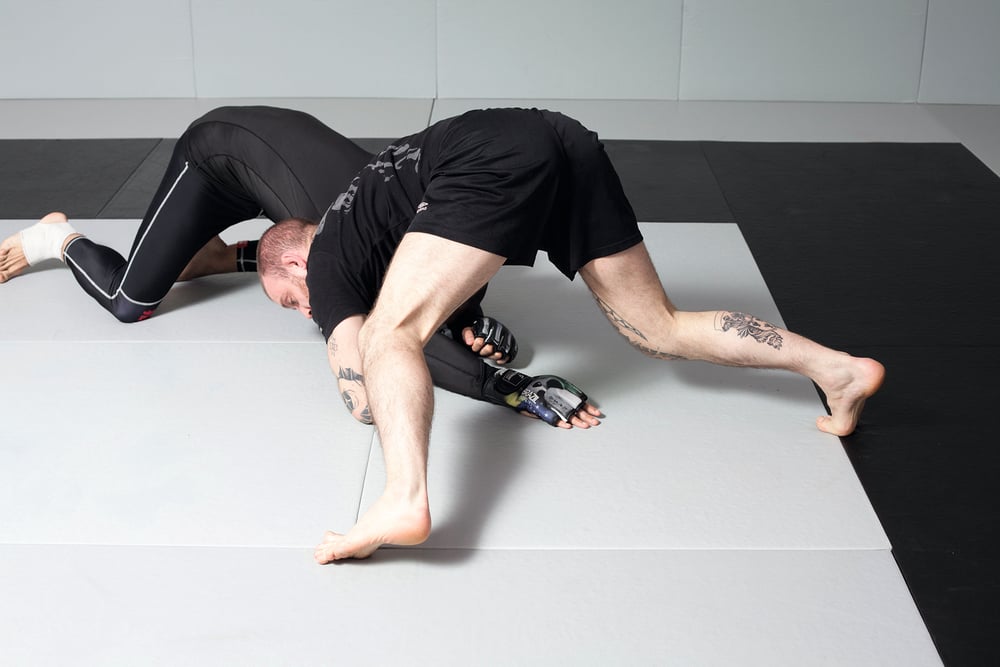
5 Pete grabs a chin strap and controls Obi’s arm, keeping his legs back to ensure Obi doesn’t take a double or single-leg takedown attempt.
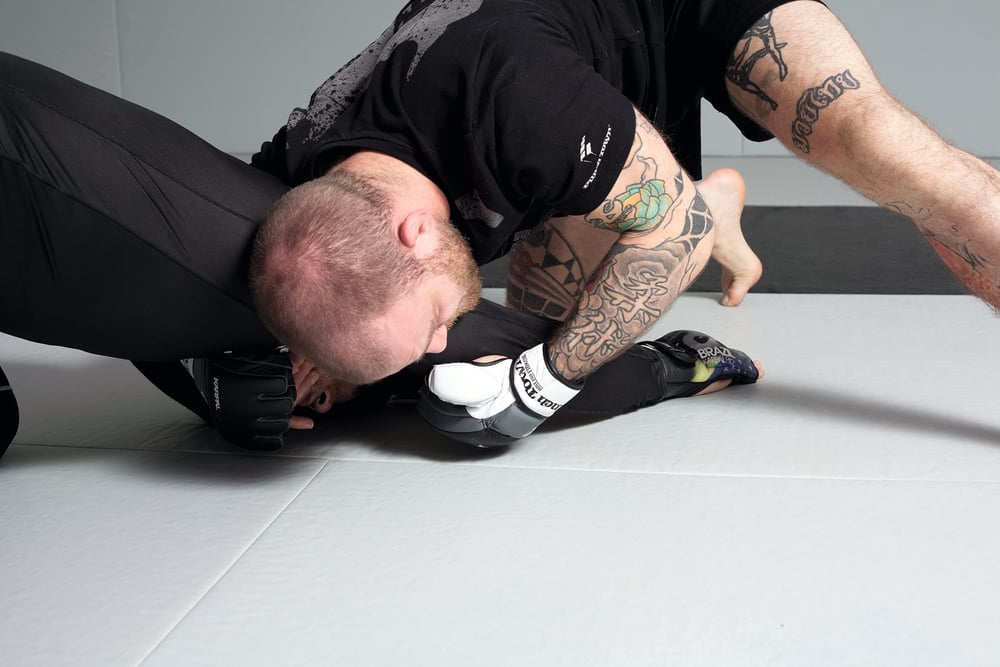
6 Here’s a reverse view to show in detail how that chin and arm control works.
...









